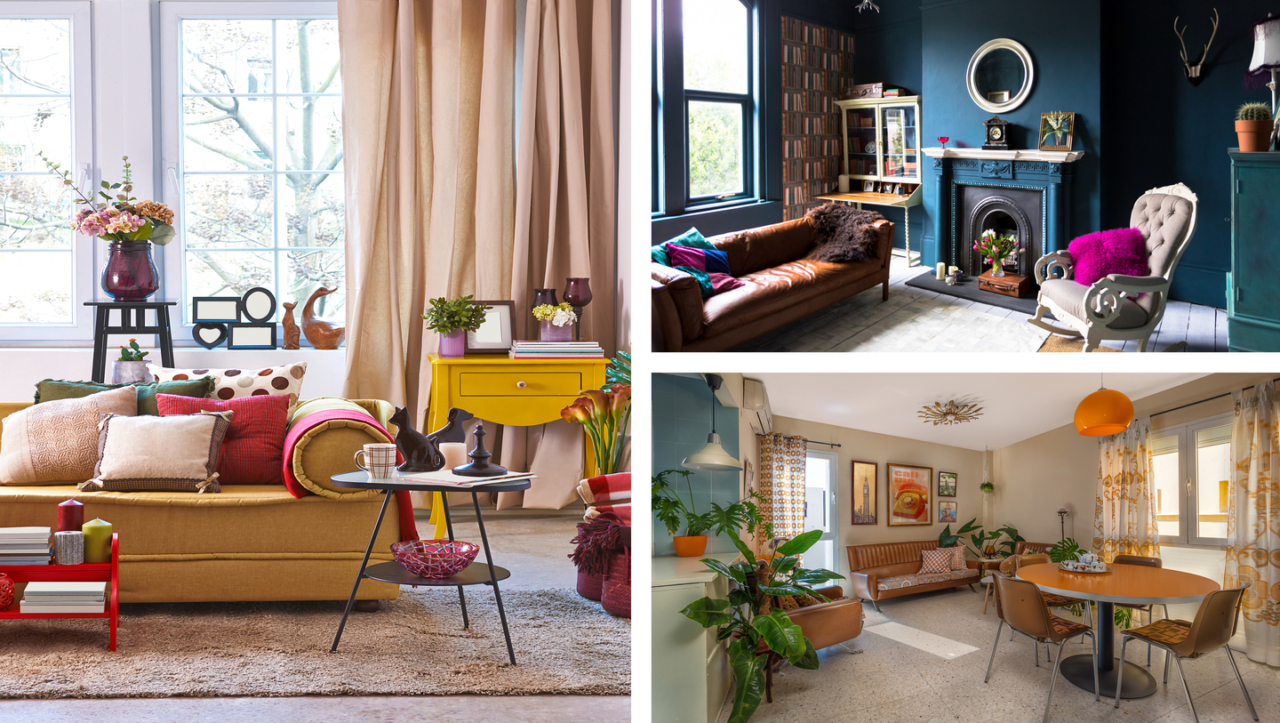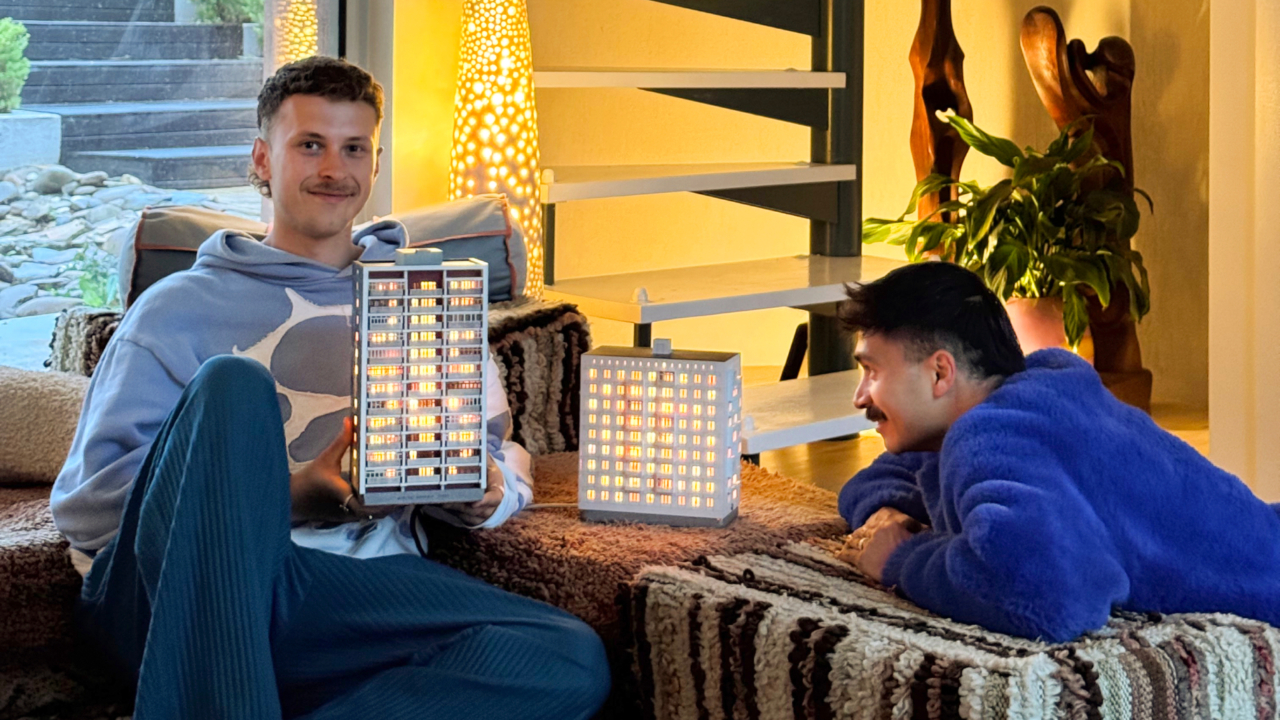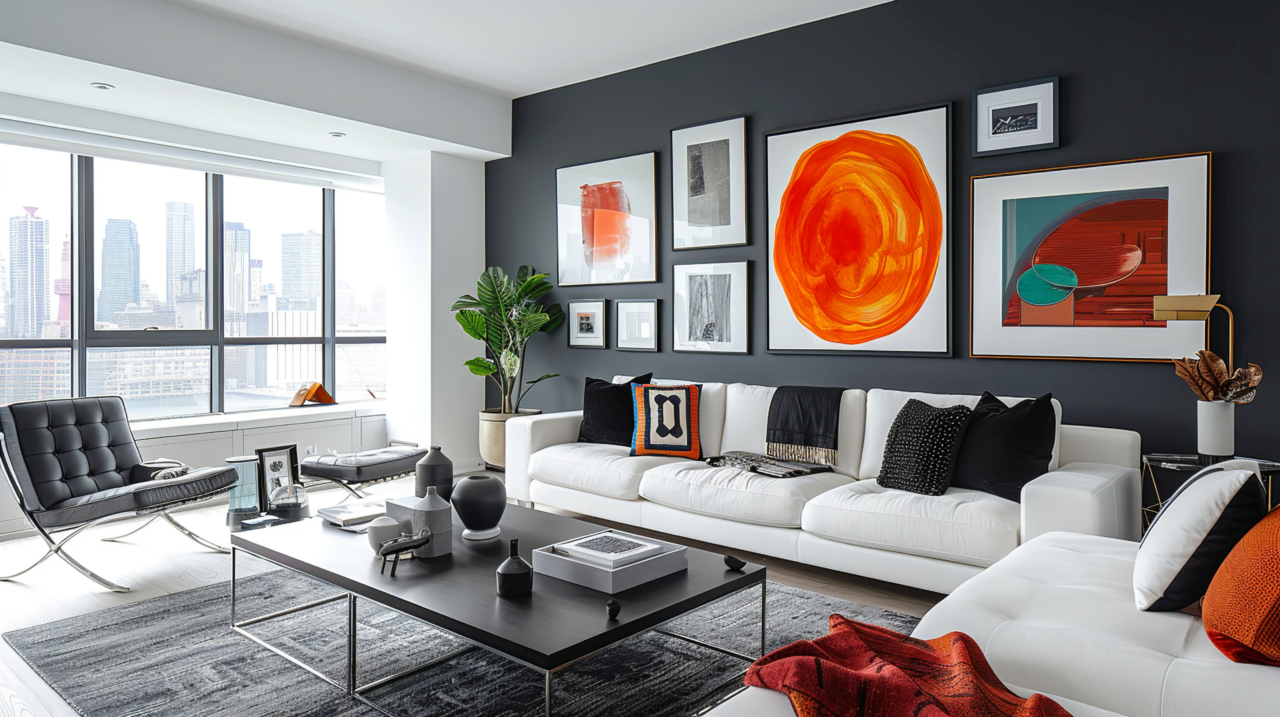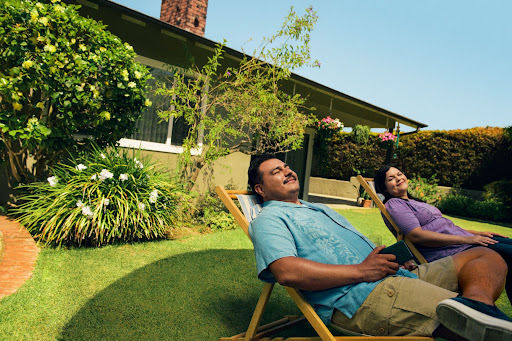Maximalist Interior Design: How to Get “More” Without the Messiness
Interior designer Sophie Robinson shares her secrets.


Written by May Ortega on April 9, 2025
Maximalist interiors are everywhere again, a celebration of boldness and abundance that seems to increasingly coexist with a desire for comfort and nostalgia. It’s not uncommon for a maximalist room to layer textiles and color palettes, mix and match eras of design, and finish with eclectic decorative objects, and somehow, it all just works.
So of course, we don’t recommend filling your space with random trinkets and clashing patterns just for the sake of it. Maximalism doesn’t have to be messy or chaotic; it can be thoughtful and intentional and pair well with almost any other interior design aesthetic. We know because we asked UK-based interior designer Sophie Robinson for her best tips on how you can achieve balanced, colorful joy in your home, to the max.
Tip #1: Express yourself and ignore the trends
One tenet of achieving a maximalist interior design style is that you’re working to make a space your own. That’s often done by incorporating things you enjoy — like certain color palettes, pieces of art that you love, patterns you really like, or even a mood you want to want to come home to.
For Robinson, maximalism is about telling your story through your home.
“Maximalism lets you have all the stuff, all the beautiful things, all together,” Robinson said. “It's about bringing more of what you love into your life. It's a really easy way to surround yourself with things that you've collected. And it's an opportunity to be completely creative and individual.”
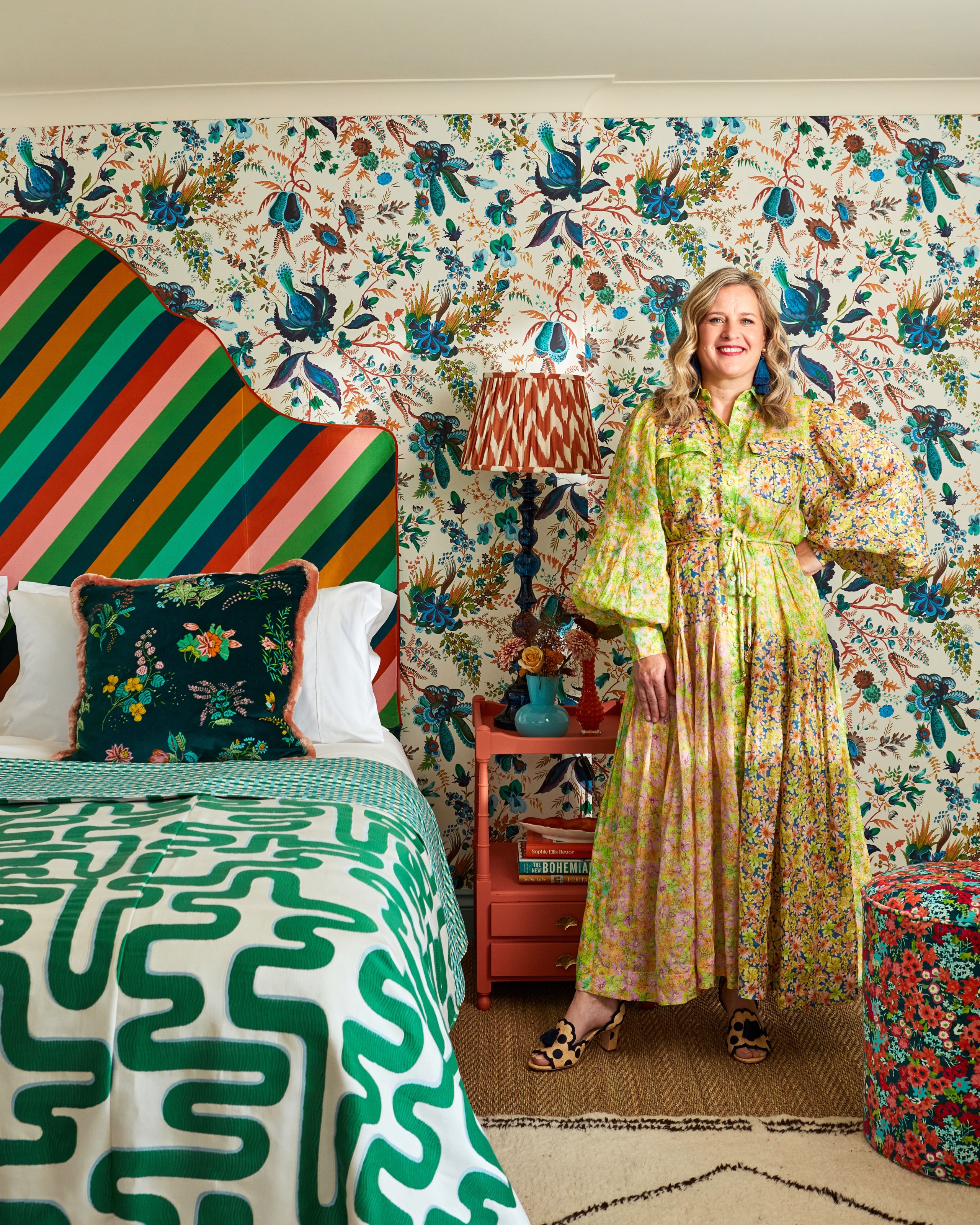
UK-based designer Sophie Robinson stands in her bedroom, which she decorated with the intent of showing off her personality. Courtesy: Harlequin.
She added that no two maximalist homes look alike, and that’s what she loves about it. Just like no two people are the same, either. See? Self-expression.
If you want to put everything you’ve ever owned on display, go for it. You can also find a happy medium where you share your personality in this tangible way, without making your home feel too chaotic. That could mean choosing a few specific spots to showcase your trinkets instead of covering every surface you can find; or routinely getting rid of things that don’t bring you joy anymore.
Tip #2: Have a vision in mind
Maximalism is sometimes conflated with messiness or clutter because it can incorporate so many patterns and materials. But Robinson said it doesn’t have to be that way. Think about how the room will come together. If you have too many mismatching details, your beautiful space can turn into visual chaos.
That’s why you should choose your color scheme or decor theme thoughtfully (more on that below). It’ll be your guide as you add more decor to your home over time. Otherwise, if you find yourself at a thrift store, it can be overwhelming if you don’t know what theme or color scheme you’re going for. Shopping online gives you even more options. So take some time to think about what you already own and want to incorporate into your space, and keep an eye out for pieces that match that vision.
Successful maximalism comes down to how you create visual harmony, combined with how it makes you feel.
“Get your vision in place from the get go,” Robinson said. “Otherwise you start getting lost down the kind of avenues of the internet and then you start buying random stuff.”
Robinson takes a physical approach to building her vision by creating a mood board, like the one below. You could also create a board on sites like Pinterest or through virtual interior design apps. Doing this can save you time and money by showing you how different elements can work together.
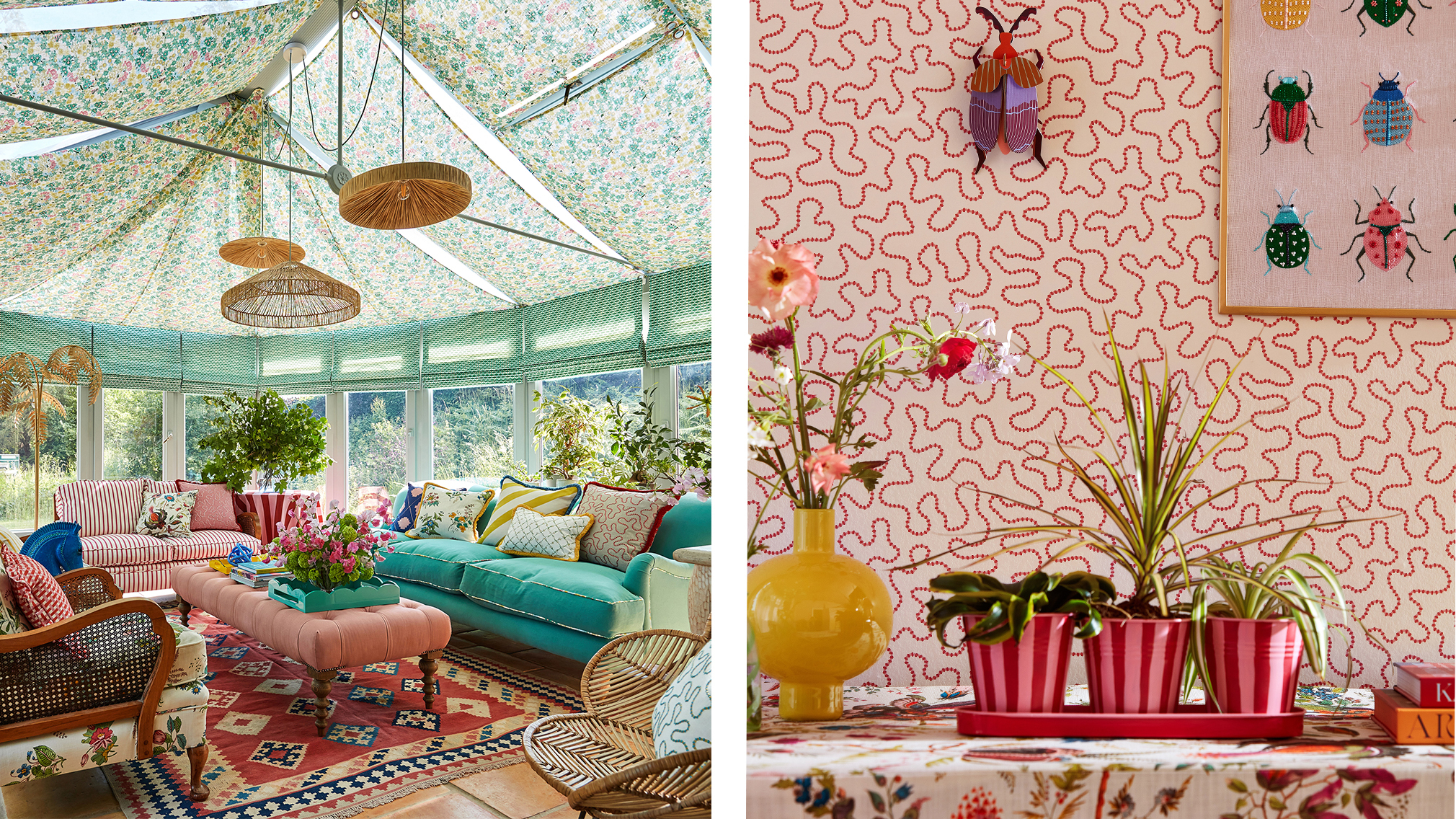
Without a solid vision, you may get too overwhelmed with your options and give up on your maximalist dream. Then you’ll end up passing on a colorful sofa and buying a gray one instead.
You can also decorate an entire space based on one beloved belonging, like a favorite painting or an heirloom tapestry. What’s important is that you choose a theme or a palette and stick to it! As seen in the photo below, Robinson chose cool shades of green and blue (with hints of pink) for her nature-inspired office.
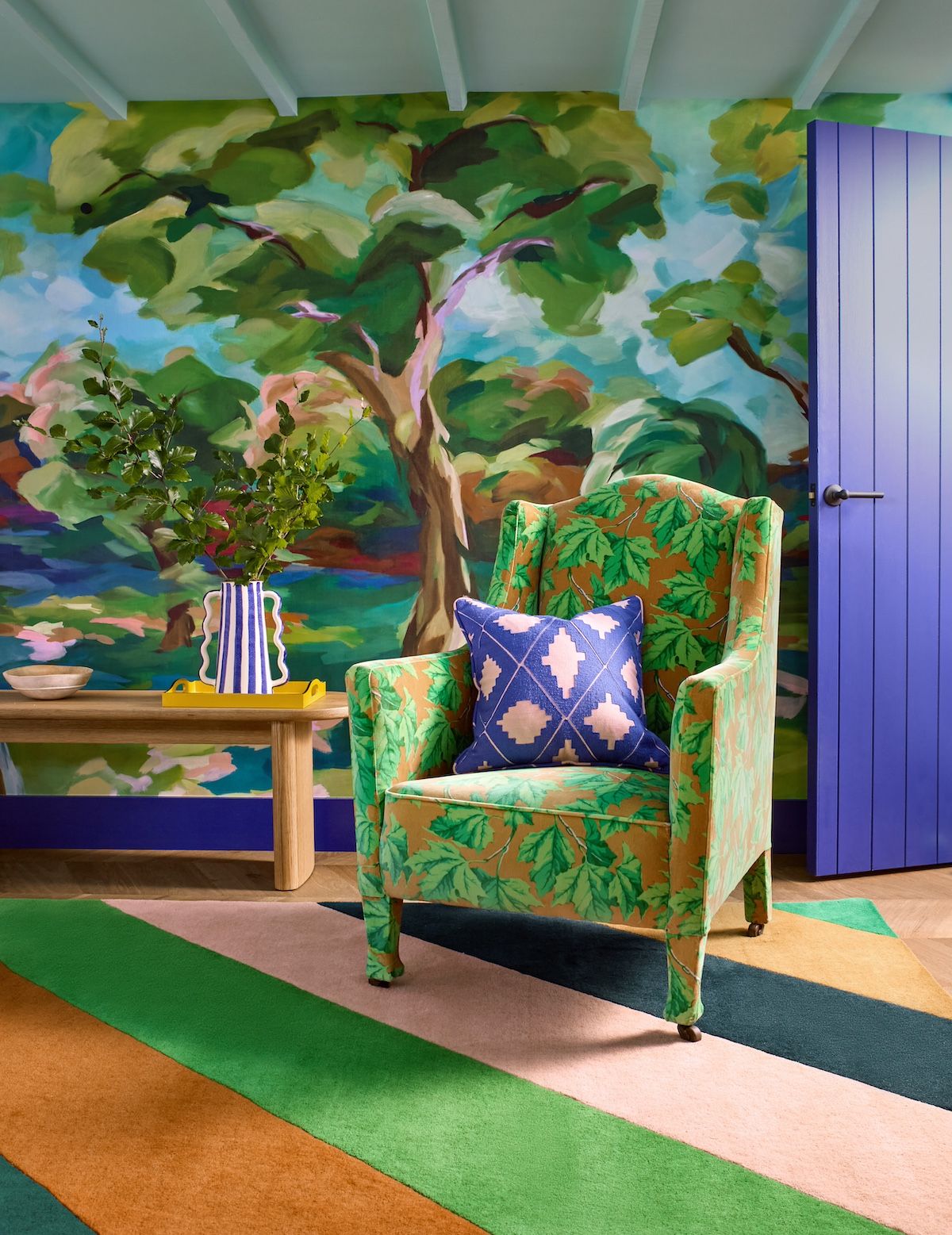
The rug Robinson created in collaboration with Rugs Direct sets the foundation in her home office. All of her designs in this collection emphasize color as a form of decor. Courtesy: Harlequin.
Tip #3: Use the emotions in color
Sure, maximalist spaces are often filled with color. But you don’t need to feel like you have to saturate your space with neon pink or emerald green (though you totally can if that’s what you like). You can have a room filled with earth tones, jewel tones, or even a 70’s-inspired palette.
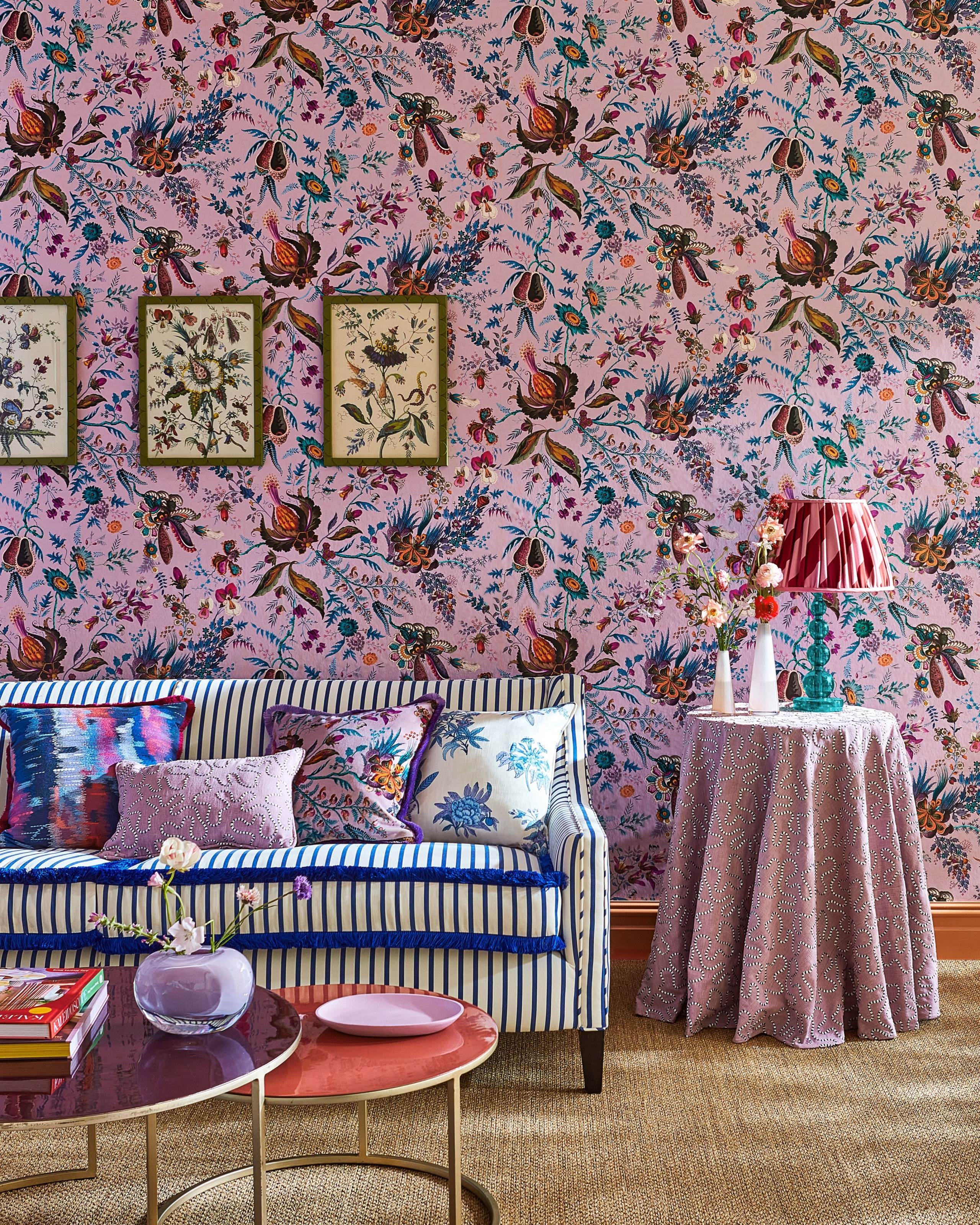
Robinson loves to use nature as inspiration when decorating a space. Here, we see strong floral imagery in various pieces of decor. Courtesy: Harlequin.
“Color has such a powerful emotional impact on us,” Robinson said. “Color is obviously just light that comes in through the eyeball and hits the brain, but it gets processed in the emotional part of our brain, which I think is really key. So if you want to feel good in your home, you've got to bring it in. No more grays, no more beige, no more whites. That does nothing for us emotionally.”
If you’re having trouble deciding which colors match best, Robinson suggests looking out the window.
“Nature knows how to do color harmony really well,” she said. “So if you are stuck looking for a color palette, just look at the different palettes we have in the fall, in the winter, in the spring, in the summer. They're all very different. And that can spark a color palette.”
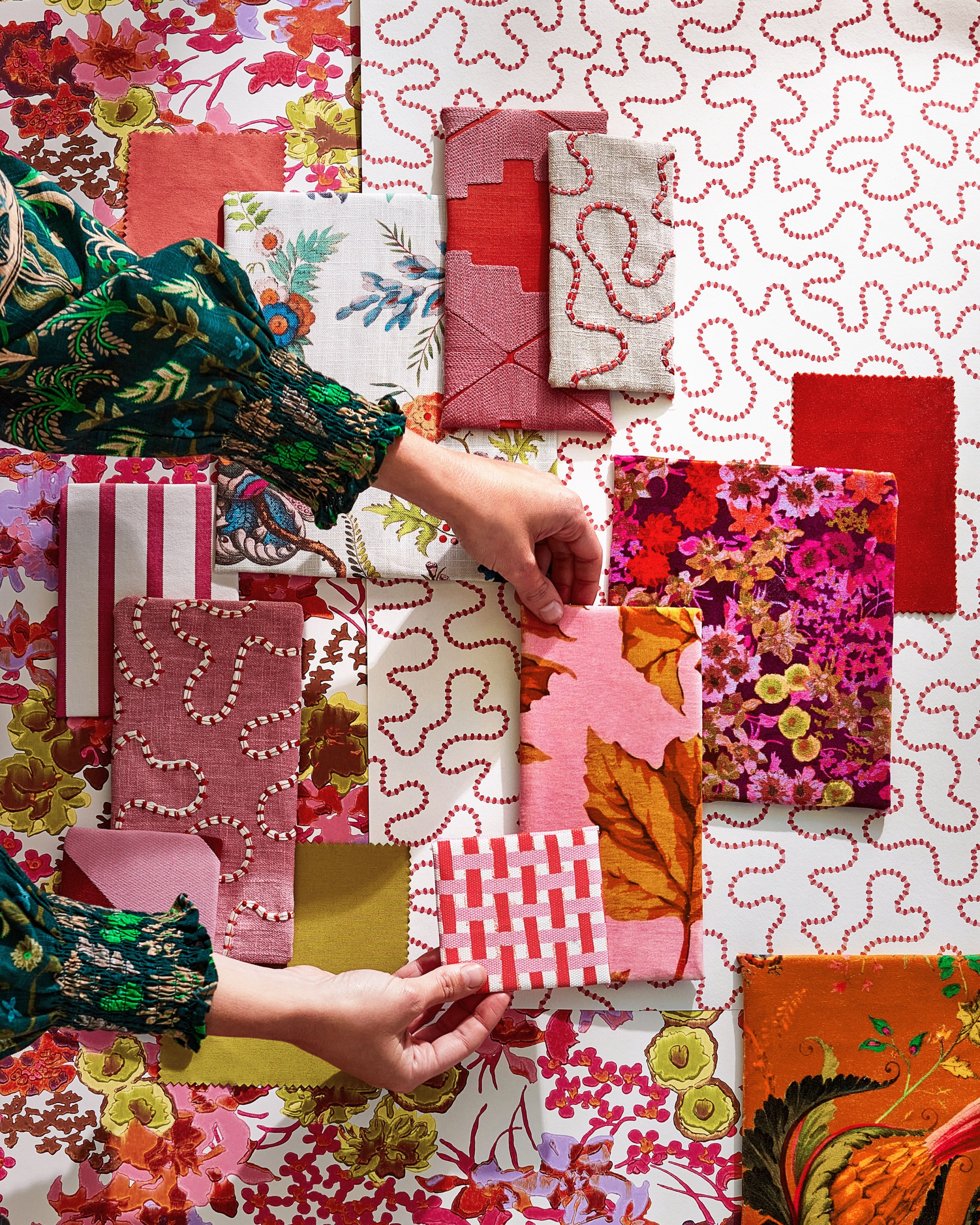
Robinson likes to create mood boards when designing a space. Here, she takes inspiration from the colors in nature. Courtesy: Harlequin.
Another approach? Color drenching. That’s where you use a single color, or various shades of one color, to paint everything in a room — from the ceiling to the baseboards. Then you have a solid background that will help your furniture and art really stand out.
Tip #4: Know you might never finish — and that's okay
If you want to give your home the maximalist treatment, accept that you may never truly be done. Maximalism turns any room into a living work of art that you can continuously add to and change.
“If you love interior decor like I do, why would you ever want to finish your home?” Robinson asked. “This is fun. It's like this creative journey of seeing new things, collecting more art, collecting more ceramics, going on a trip, buying a rug. So it's this constant layering. I call it the ‘go slow’ approach to decorating.”
And that slow approach also means you don’t need to break the bank. Unique pieces of decor, beautiful wallpaper, and large rugs can drain your bank account if you buy them all at once. But if you let your home be a constant evolution, you can go piece by piece. There are no deadlines in maximalist design.
Of course, if you ever do feel like you’ve created your perfect atmosphere, you can stop whenever you feel that things are just right. After all, the whole point is to design to your heart’s desire.
Tags
Ready for a new address?
Get an instant cash offer or list with a local partner agent.
Explore selling optionsRelated Articles
Sell your home with a winning strategy
Here’s how to maximize your home sale with the right selling plan.

Build a smart selling plan
Talk to your agent about their marketing approach - especially online - to ensure you’re getting the best possible price for your home.
